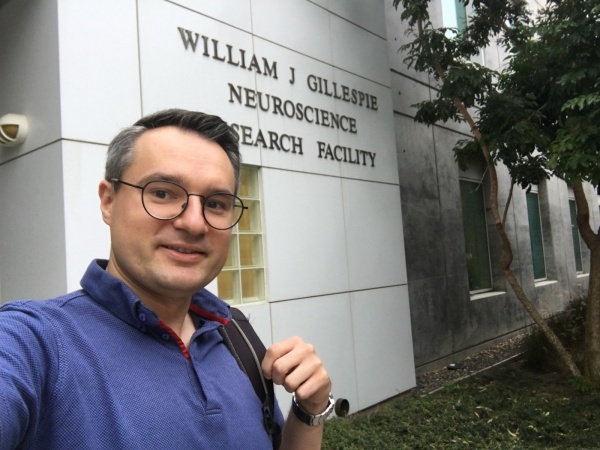Visit to the University of California Irvine
Dr hab. Adam Kubas, a member of the Modern Heterogeneous Catalysis Group spent two weeks at the University of California Irvine on a research visit to Palczewski Lab (Center of Translational Vision Research). The US group is now actively working on the E/Z-isomerization of retinoid derivatives. A. Kubas provides quantum chemical support for their studies and his calculations allow for an in-depth understanding of various mechanical aspects of studied transformations.
The major aim of the visit was to familiarize A. Kubas with experimental techniques that are used in the Palczewski Lab to investigate (photo)catalytical E/Z-isomerization of retinoid derivatives. The knowledge of experimental details is a key to design and interpret quantum chemical simulations of studied processes. Particularly, during his stay at UC Irvine, he worked with Shirin Kahremany who is a senior PostDoc with Prof. Palczewski. Shirin presented experimental setups used for gram-scale transition metal catalyzed isomerization. In the latter work, A. Kubas together with Palczewski Lab’s members explored the possibility of a photochemical approach for the catalytic Z-isomerization of retinoids using monochromatic wavelength UV irradiation treatment. The mechanistic insights provided by A. Kubas stimulated further discussion about the possible use of some types of metal photocatalysts to increase the reaction yield and selectivity. Additionally, in close collaboration with Prof. Philip Kiser, A. Kubas built a multi-level quantum model of the active site of the retinoid isomerase RPE65.
The visit was highly successful and paved the way for a long-term collaboration that will eventually result in an explanation of some details of the vertebrate vision process in details at the most basic, molecular level. A. Kubas and Prof. Palczewski also discussed a joint grant application to cover further costs related to this challenging project.
Visitor
Adam Kubas
Dates
4-17 Aug. 2019
Location
University of California Irvine



